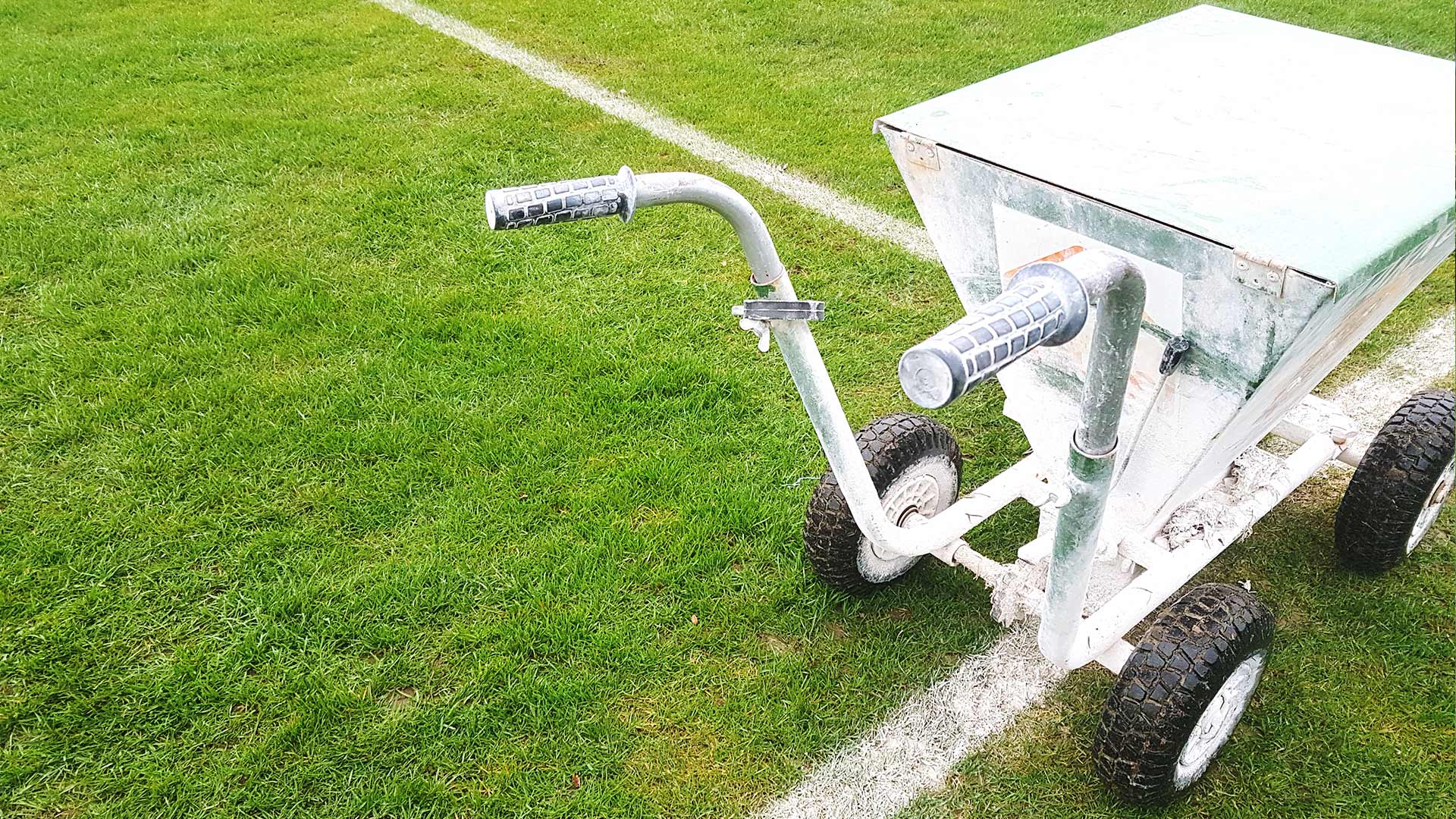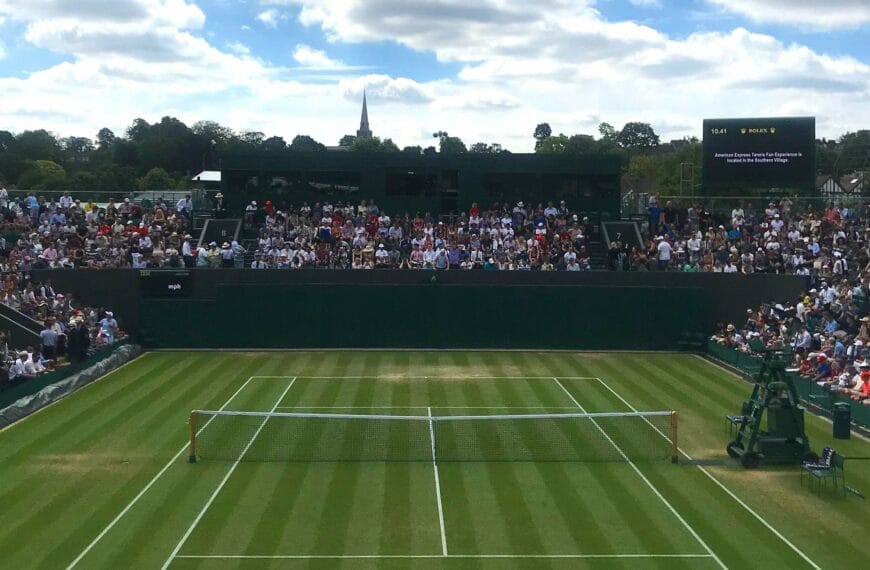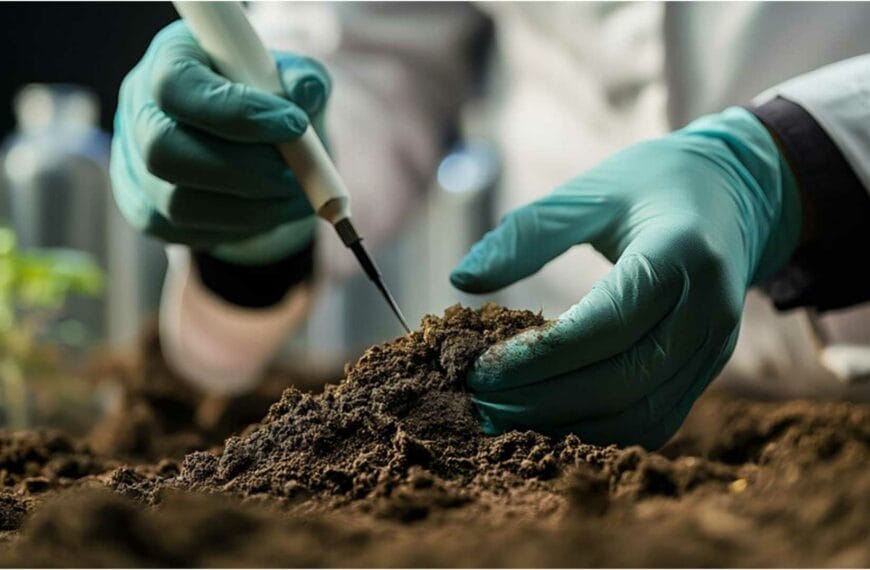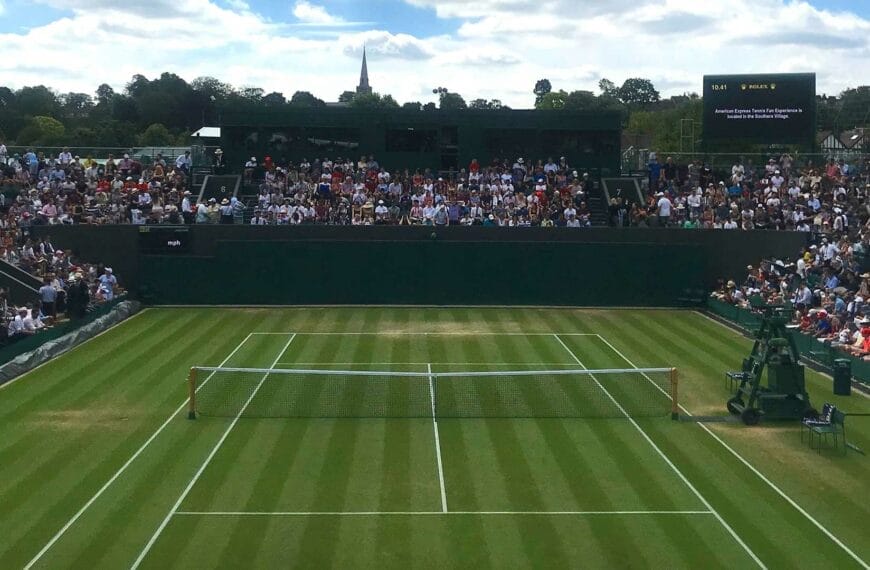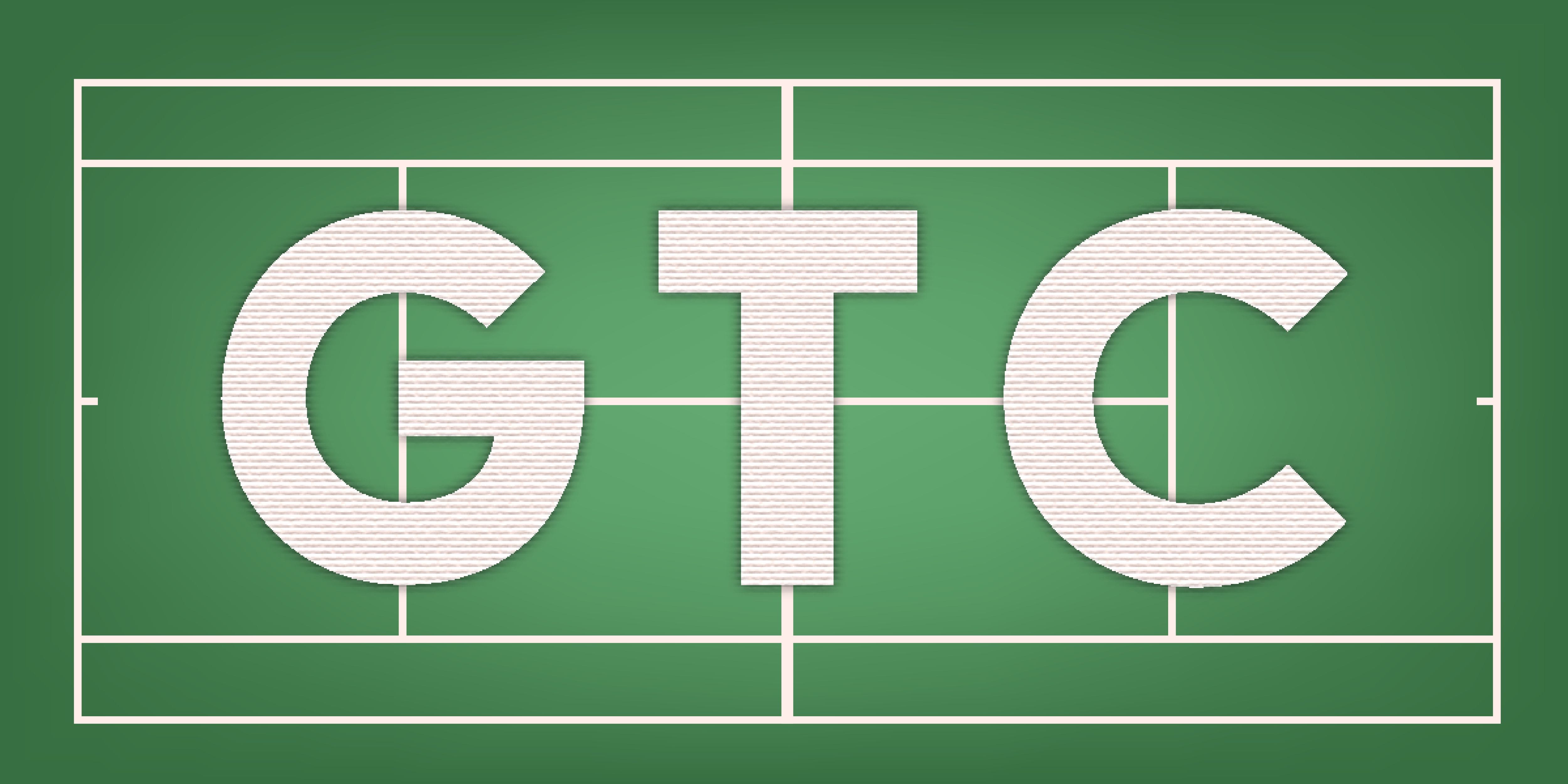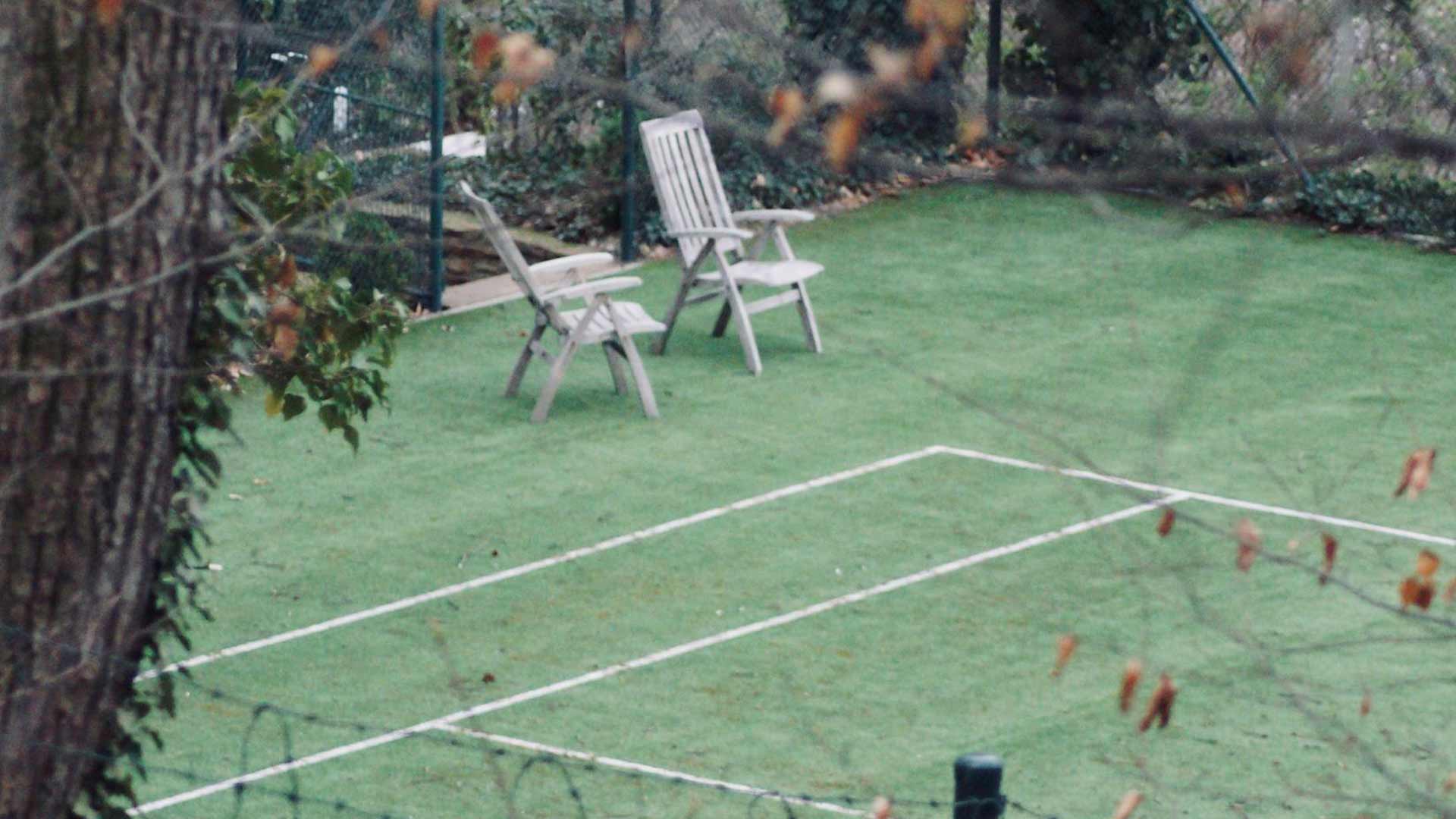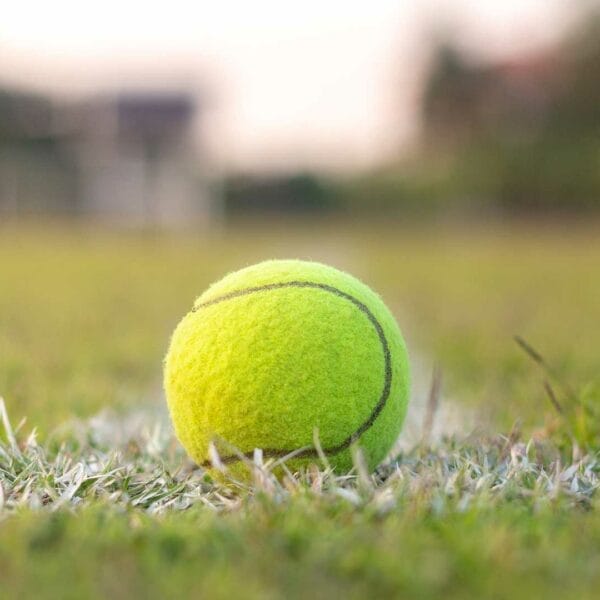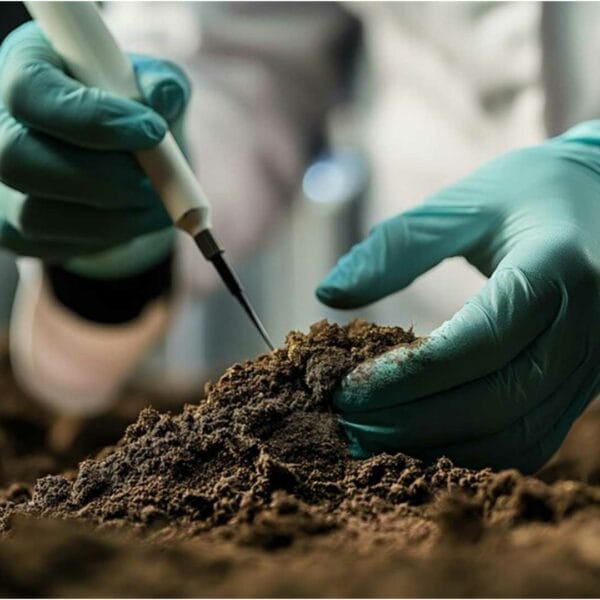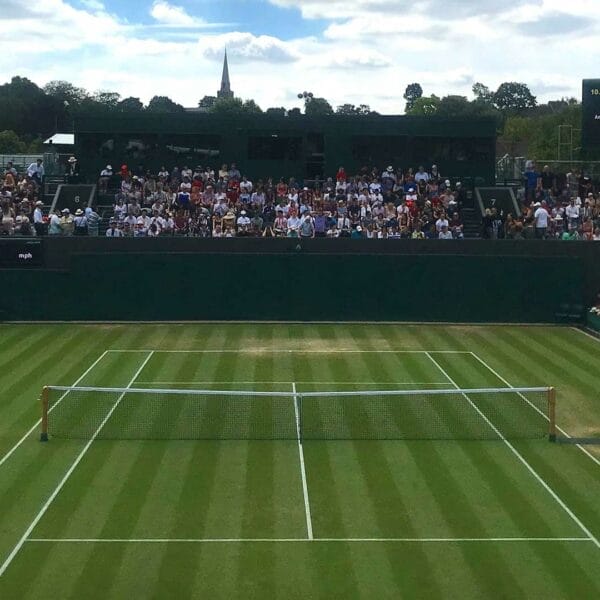The Art of Precision: How Tennis Lines are Marked on a Grass Court
The pristine white lines gracing a lush green grass tennis court are more than just boundaries; they are the very definition of the game, dictating where the ball lands “in” or “out.” Their crispness and accuracy are fundamental to fair play and the aesthetic appeal of a championship-standard court. While other surfaces have integrated or painted lines, marking lines on a living, growing grass surface presents unique challenges and requires a blend of traditional craftsmanship and modern precision. As grass court experts, we understand that this seemingly simple task is, in fact, an art that demands specific materials, techniques, and an unwavering commitment to detail.
As you’ve highlighted, “Tennis lines on a grass court are marked using a special white paste or paint. The lines are typically 5 cm wide, with the baseline being slightly wider at 10 cm. A line marker machine ensures precision, and regular maintenance is required to keep the lines visible.” This concise description hints at a fascinating process. Let’s delve into the intricacies of how these iconic lines come to life, from the choice of material to the meticulous maintenance required, whether at a prestigious club or a budding facility in Kuala Lumpur.
The Material: More Than Just White Paint
Unlike hard courts where permanent paint is used, grass courts require a marking material that is visible, durable enough to withstand play, yet gentle on the grass and capable of being refreshed regularly. The “special white paste or paint” typically refers to a non-toxic, water-soluble, and biodegradable liquid chalk or lime-based solution. Key characteristics of this material include:
- Visibility: It must provide a stark, bright white contrast against the green grass.
- Adhesion: It needs to adhere well to the grass blades without clumping or smudging excessively.
- Non-damaging: Crucially, the material must not harm the grass or inhibit its growth. Chemical-based paints are unsuitable as they would burn the turf.
- Temporary/Renewable: Grass grows, and lines fade. The material must be easily renewable, allowing for fresh lines to be applied as needed, often daily during tournaments.
- Quick Drying: To minimize disruption to play, the paste needs to dry relatively quickly.
Traditionally, a slaked lime solution was used, but modern marking fluids are often polymer-based emulsions with high concentrations of titanium dioxide for brightness, designed specifically for sports turf. These modern formulations offer improved longevity and visibility while remaining turf-friendly.
Precision in Practice: The Line Marking Machine
Achieving perfectly straight, uniformly wide lines across a large grass court is no small feat. This is where the specialized “line marker machine” becomes indispensable. These machines are designed for accuracy and efficiency:
- Roller or Spray Systems: Most machines use either a roller (which applies the liquid directly onto the grass) or a spray nozzle system. Roller markers tend to provide a thicker, more consistent line, while spray markers can be quicker for larger areas.
- Adjustable Width: High-quality line markers allow for precise adjustment of line width. This is critical for adhering to tennis regulations.
- Wheeled Stability: The machines are typically wheeled, ensuring a smooth, consistent application as the operator walks, minimizing wobbles and deviations.
- Internal Mixing: Many professional machines have internal agitators to keep the marking fluid consistently mixed, preventing settling that could lead to uneven line quality.
While the machine does the application, the operator’s skill is paramount. Ensuring the court is perfectly measured out and using guide strings is essential before the first line is applied.
Standard Dimensions: 5 cm and 10 cm Baselines
The International Tennis Federation (ITF) specifies precise dimensions for tennis court lines to ensure fair and consistent play globally. Your description accurately reflects these standards:
- All lines (except baselines): Must be between 2.5 cm and 5 cm (1 to 2 inches) wide. The general practice for grass courts is to use a 5 cm width for maximum visibility and aesthetic appeal.
- Baselines: The two lines at each end of the court must be between 2.5 cm and 10 cm (1 to 4 inches) wide. Grass courts typically opt for the wider 10 cm baseline, giving players a clearer reference point for serving and returning. This wider line also provides a slightly larger visual target for line judges.
These precise measurements are adhered to rigorously, particularly in professional tournaments. Groundskeepers use measuring tapes and guide strings to lay out the court dimensions accurately before marking, ensuring every line is exactly where it should be.
The Process of Marking Lines: A Step-by-Step Guide
- Preparation: The court should be freshly mown to its playing height. The marking fluid is prepared and loaded into the machine.
- Measurement and Layout: Using a steel measuring tape, the court dimensions are meticulously measured. Guide strings (often brightly colored for visibility) are stretched taut along where each line will be. This is the most crucial step for accuracy.
- Application: The line marker machine is carefully guided along the inside edge of the guide strings. The operator must walk at a consistent pace to ensure an even application of the paste.
- Drying: The lines are allowed to dry. In sunny, dry conditions, this can be quick, but in humid environments like Kuala Lumpur, more time or even a fan system might be needed for faster drying.
- Touch-ups: Any smudges or inconsistencies are carefully cleaned up.
The process demands a steady hand, a keen eye, and a deep understanding of court dimensions. Misaligned or wobbly lines detract from the professional appearance and can even impact player perception.
Regular Maintenance: Keeping Lines Visible
Unlike hard courts, grass courts are living surfaces. The grass grows, is mown, and can be disturbed by play. Therefore, “regular maintenance is required to keep the lines visible.” This is an ongoing commitment:
- Daily Re-marking (During Tournaments): At events like Wimbledon, lines are often re-marked daily, or even between matches, to ensure they are crisp and bright for television cameras and players.
- Weekly/Bi-weekly Re-marking (Club Play): For club use, lines may be re-marked weekly or bi-weekly, depending on usage, weather, and the specific marking fluid’s durability.
- Addressing Wear: Areas around the baselines and service lines experience the most foot traffic and wear. These areas may require more frequent attention.
- Mowing Considerations: Groundskeepers must be careful not to cut away too much of the marked grass during mowing, which would quickly diminish line visibility. The marking solution adheres to the blades of grass, so if the blades are cut, the line fades.
The constant need for refreshing the lines contributes to the unique charm and labor-intensive nature of grass court maintenance. It’s a testament to the dedication required to present a perfect playing surface.
“The white lines on a grass court are ephemeral art, refreshed daily, defining the boundaries of play against the living canvas of the turf.”
Challenges and Solutions in Tropical Climates
Marking lines in a tropical climate can present specific challenges:
- Rainfall: Frequent heavy downpours can wash away freshly applied lines before they fully dry, requiring re-application.
- **Solution:** Use quick-drying formulations and schedule marking during predicted dry spells. Consider temporary covers if heavy rain is imminent after marking.
- High Humidity: Can prolong drying times for water-based marking fluids.
- **Solution:** Ensure good air circulation. Some clubs might even use portable fans on high-profile courts.
- Rapid Grass Growth: Grass grows faster in warm, humid conditions, meaning lines will fade more quickly due to mowing and new growth.
- **Solution:** More frequent marking will be necessary. Choosing durable, long-lasting marking fluids is crucial.
These considerations highlight why local expertise and adaptive maintenance strategies are paramount for grass courts in such environments.
The Beauty of the Impermanent
The temporary nature of grass court lines is part of their charm. It symbolizes the constant renewal and living aspect of the surface, contrasting with the fixed, hard lines of other court types. This dynamic element contributes to the unique character of grass court tennis.Conclusion
The white lines on a grass tennis court are a testament to precision, specialized materials, and dedicated maintenance. From the careful selection of turf-friendly paste to the skilled operation of a line marking machine and the ongoing commitment to visibility, every step ensures a fair and beautiful playing environment. Understanding this intricate process is key to appreciating the artistry and effort that goes into preparing a world-class grass court. For more detailed insights into all aspects of court maintenance, construction, and the nuances of creating truly exceptional grass tennis surfaces, explore GrassTennisClub.com.
Further Reading & Resources:
- Text Resource: “International Tennis Federation (ITF)” Search Rules
- Video Resource: “Wimbledon Groundstaff – Marking Lines” Wimbledon Line Marking.
Disclaimer: This blog post provides general guidance. Always refer to the latest ITF rules and consult with experienced turf professionals for specific product recommendations and application techniques tailored to your court and local climate.

